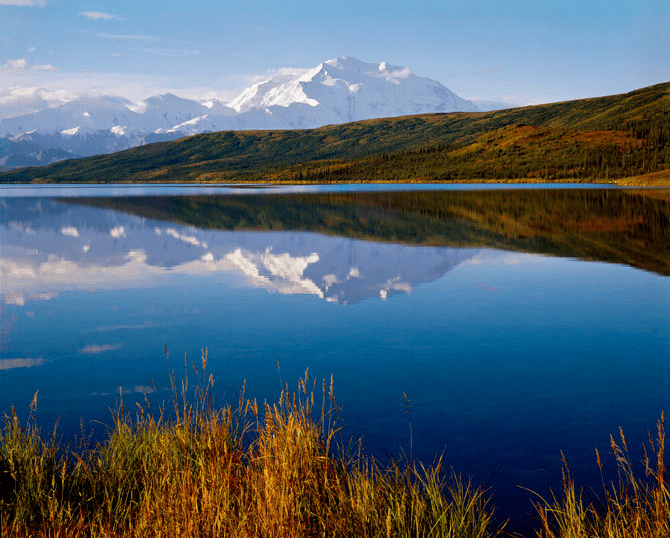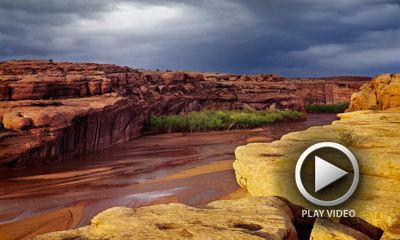Name Philip Hyde Role Photographer | ||
 | ||
Died March 30, 2006, Reno, Nevada, United States Education San Francisco Art Institute | ||
Philip hyde photographer
Philip Hyde (1921–2006) was a pioneer landscape photographer and conservationist. Out of thousands of Ansel Adams' students, Hyde was one of the few Ansel Adams asked to teach with him. Hyde first attended Ansel Adams' photography program at the California School of Fine Arts, now the San Francisco Art Institute, beginning with the Summer Session in 1946 and enrolling in the full-time professional photography training, the first of its kind, in the Fall of 1947, studying under photographers such as Edward Weston, Minor White, Imogen Cunningham and Dorothea Lange
Contents

Hyde became a contributing photographer for the Sierra Club Annual in 1951. He photographed for This is Dinosaur: Echo Park Country and Its Magic Rivers, a 1955 book edited by Wallace Stegner highlighting a proposed dam on the Green River in Dinosaur National Monument in Utah and Colorado, Hyde eventually became the primary conservation photographer for the Sierra Club. David Brower commissioned him to photograph for what came to be known as "battle books,"that helped the Sierra Club lead a coalition of environmental groups to establish or expand numerous national parks, wilderness areas and national seashores. This series of books the Sierra Club called The Exhibit Format Series. The most well-known photographers for the series were Ansel Adams, Eliot Porter and Philip Hyde. The Exhibit Format Series helped bring national attention to the Sierra Club and the cause of conservation and popularized the coffee table photography book paving the way for thousands of books of this type in the years since.

In the late 1950s and early 1960s, the US Bureau of Reclamation proposed two dams in the Colorado River on either end of the Grand Canyon. The Sierra Club published a book called Time and the River Flowing: Grand Canyon in 1964 in a successful campaign to turn public opinion against these dam projects that threatened the integrity of the wild river and its canyon. Hyde was the primary photographer. This book reshaped the image of the Grand Canyon for Americans and triggered an outpouring of support and letters from all over the world to prevent the flooding of the canyon. Hyde's photographs appeared in campaigns to create North Cascades National Park, Redwood National Park, Point Reyes National Seashore, High Sierra wilderness, the Wind River Range, Canyonlands, islands off Puerto Rico, Big Sur, Kings Canyon, Sequoia National Park, Denali National Park, Tongass National Forest, the Navajo Tribal Parks, the Oregon Cascades, and many other national treasures.

Hyde said, "For every place there will always be people that want to exploit it, and there will always be people—hopefully—that want to save it and keep it as it is. Even with the risk of inviting the crowds into paradise, better to publish your photographs and rally the troops. What’s in the frame of the photograph matters artistically, to be sure, but what’s outside the frame can destroy it."

Hyde began making color photographs in 1948. In 1949, the California School of Fine Arts photography department supplemented its usual black and white training with a color photography class that Philip Hyde attended. The Sierra Club Exhibit Format Series began to introduce color photography to their books in 1962. In Wildness Is The Preservation of the World by Eliot Porter and Island In Time: The Point Reyes Peninsula were the first two nature photography books ever to contain color photographic reproductions. Philip Hyde's color photographs also appeared in Time and The River Flowing: Grand Canyon, Navajo Wildlands and other Sierra Club books before the 1970s. After spending time in the desert and discovering improvements in the dye transfer printing process, in the 1970s Hyde gradually transitioned completely away from black-and-white photography to focus solely on color. He is well known for collaborating with author Edward Abbey on the desert classic, "Slickrock: The Canyon Country of Southeast Utah," (1971) yet another Sierra Club book published to highlight the threats to wilderness, in this case, the Utah Redrock country of Canyonlands National Park, Capitol Reef National Park, and the Escalante River wilderness.

Publications
Hyde's last interview was featured in "Lasting Light: 125 Years of Grand Canyon Photography" by Stephen Trimble
Hyde contributed to nearly 80 books. In those following he was the primary illustrator:
